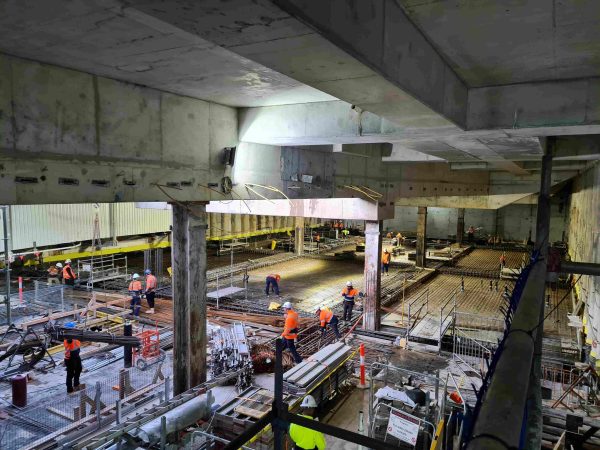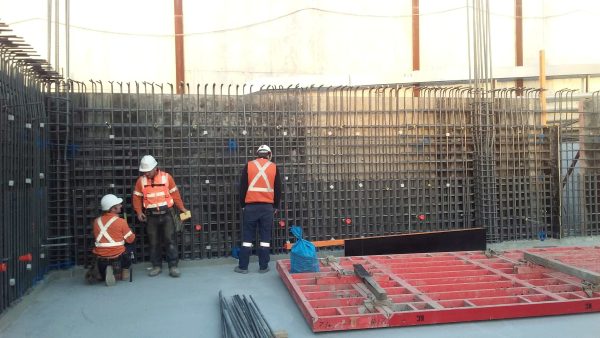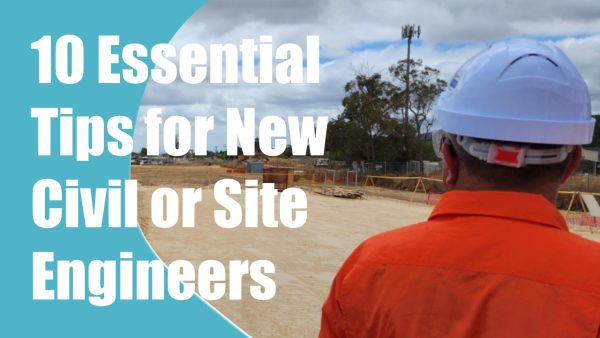Civil Engineering Careers in Australia: An Introduction
This article (and website) aims to guide undergraduate engineers and all civil and construction engineering professionals on what it is like to work in the construction and civil engineering industry on major infrastructure projects.
This article will cover:
- The civil engineering and project delivery landscape in Australia
- The benefits of working with a Tier 1 Contractor
- Engineering disciplines or streams
- Engineering roles and career progression
The Civil Engineering and Project Delivery Landscape in Australia
Australian construction and civil engineering firms are classified as either Tier 1, 2, or 3. These tiers define the companies by company size, revenue, number of staff, project sizes, and level of complexity. Tier 1 contractors can take on the largest projects and often self-deliver much of the project scope. Recent examples include CPB, John Holland, or Acciona self-delivering the tunnelling scopes on the Sydney Metro and Westconnx projects in Sydney.
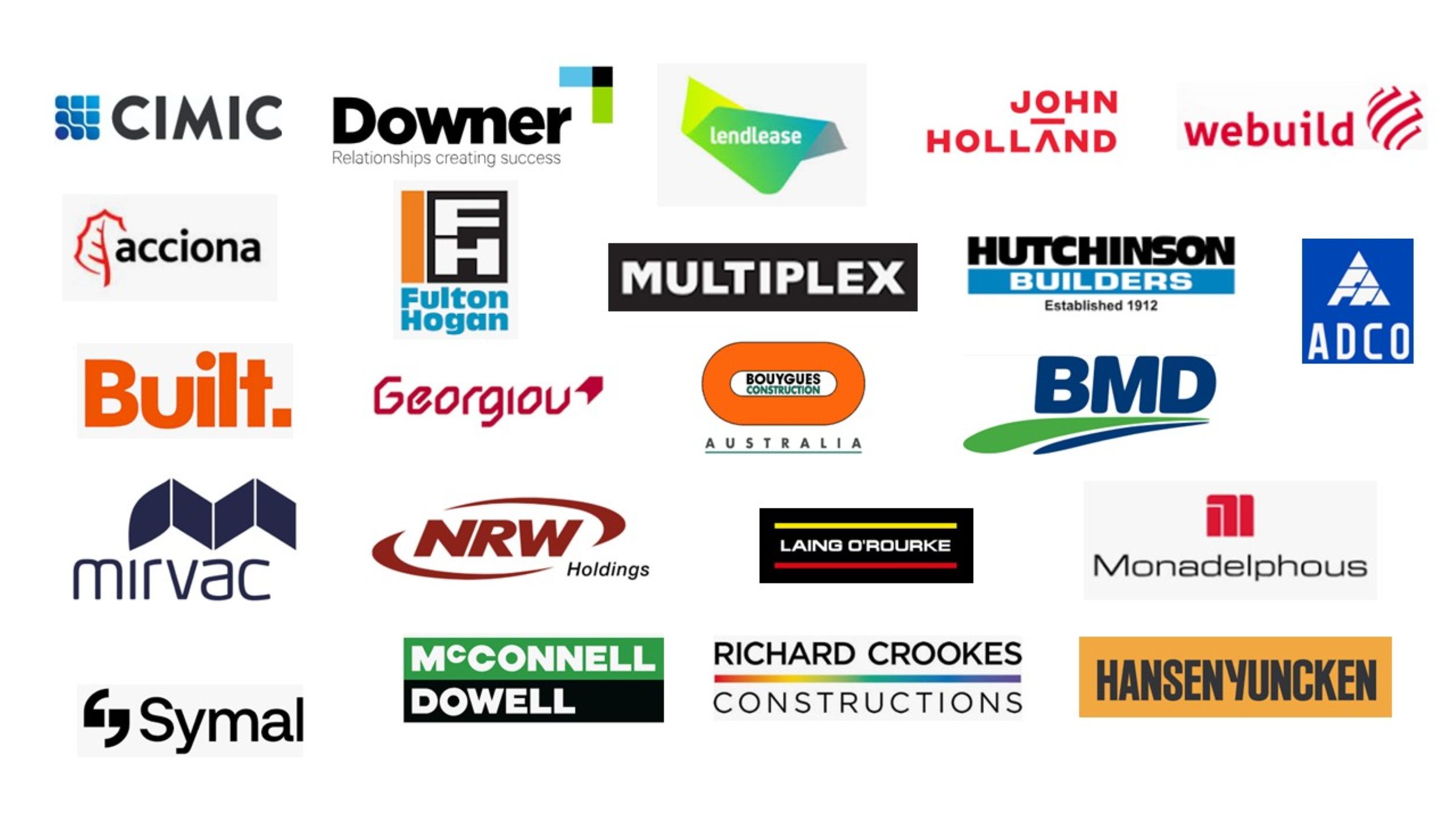
This article focuses on working with Tier 1 contractors. Starting your career with a well-respected Tier 1 contractor will set you up for success later in your career by exposing you to a broader level of experience early on.
Our tables below list the top 22 construction companies operating in Australia by annual revenue and number of employees in 2024. These are the companies a prospective engineer should apply to if seeking a civil engineering career in Australia.
Top 22 Civil Engineering Contractors by Revenue
Top 22 Civil Engineering Contractors by Number of Employees
Engineering Disciplines & Sectors
Now that we know the companies involved, we can explore the disciplines of engineering work they deliver. Working with Tier 1 contractors will expose engineers to the following engineering disciplines. They include:
- Geotechnical (piling & foundations)
- Civil
- Structural
- Building fit-out & finishes
- Hard & Soft Landscaping and civil finishes
- Mechanical & electrical engineering
- Communications
Along with the opportunity to work on the following project types and industry sectors:
- Road / Highway
- Rail
- Aviation
- Port & Marine
- Mission-critical
- Tunnelling
- Utilities
- Energy
- Defence
- Mining & resources
- Healthcare
Benefits of working with Tier 1 contractors.
We have covered the experience and sector benefits for an engineer’s career. Now let’s look at some additional career benefits of working with Tier 1 contractors. These include:
- Job security – often larger contractors have the financial reserves to weather a downturn, thus retaining good employees until another project commences.
- Job longevity – the major infrastructure projects that contractors take on can range from 2 to 10+ years.
- Opportunity to travel – Projects can be in local or international locations, and decent relocation, travel, or uplift payments are often provided.
- Visa & Immigration – Larger Tier 1 contractors are often willing to sponsor a candidate, which may include organising and paying for their working Visa.
- Career progression – all Tier 1 contractors have structured career advancement toolkits and programs.
- Networking & Mentorship—A major infrastructure project office may have 100 to 500 staff. An engineer can garner a massive range of experience and knowledge among a group of this size.
- Professional development – often, contractors will support your journey towards chartered status, and most will provide regular training and development programs.
- Reputation – A hiring or project manager for a Tier 1 contractor will be familiar with all the 22 companies listed in the previous tables. Your chances of standing out will be dramatically improved if you have experience with one of these Australian companies.
Engineering Roles, Disciplines and Project Structure
The engineering roles for a significant infrastructure project with a Tier 1 contractor in Australia will be characterized by two essential criteria:
- The standard structure of a major infrastructure project team. This is demonstrated in the tables below.
- Expertise relevant to the project requirements. For example, requiring engineers with overhead line and track experience for a rail project or engineers with structural concrete experience for a concrete frame or multi-level basement.
To address point 1 above, we have put together a series of tables describing the team structure on a Tier 1 major infrastructure project and listed the roles within these team. The project team comprises of eleven functions or smaller teams. (Delivery, Commercial & Procurement, Planning & Project Controls, Quality, Completions & Commissioning, Technical, Sustainability, Environmental, Health & Safety, Community & Stakeholder Engagement, HR & People, Project Administration).
Engineers are present in all functions except HSE, CSE, Sustainability, and project administration. Although they interface with all functions daily. The roles highlighted in red font usually possess an engineering degree or started their career as an engineer. The delivery team is where most of the engineers work.
The delivery team may also be larger than indicated below and can be organized by discipline or location. We will delve into this later when we address point 2.
Team |
Delivery Team |
||
| Sub-Team (can be more sub-teams depending on project scope) |
Civil Team | Structures Team | Utilities / Services Team |
| Roles | Project Mangers | Project Mangers | Project Mangers |
| Construction Managers | Construction Managers | Construction Managers | |
| Graduate Engineers | Graduate Engineers | Graduate Engineers | |
| Site Engineers | Site Engineers | Site Engineers | |
| Project Engineers | Project Engineers | Project Engineers | |
| Senior Project Engineers | Senior Project Engineers | Senior Project Engineers | |
| General Superintendents | General Superintendents | General Superintendents | |
| Superintendents | Superintendents | Superintendents | |
| Site Managers | Site Managers | Site Managers | |
| Senior Supervisors | Senior Supervisors | Senior Supervisors | |
| Supervisors | Supervisors | Supervisors | |
| Leading Hands | Leading Hands | Leading Hands | |
Team |
Commercial & Procurement Team |
||
| Sub-Team | Procurement Team | Commercial | Cost Team |
| Roles | Senior Procurment Manager | Senior Commercial Managers | Senior Cost Engineer |
| Procurement Manager | Commercial Managers | Project Accountant | |
| Procurement Officer / Coordinator | Senior Quantity Surveyors | ||
| Quantity Surveyors | |||
| Contract Administrators | |||
Team |
Planning & Project Controls Team |
|
| Sub-Team | Planning Team | Information & Document Management Team |
| Roles | Planning & Project Controls Manager | Project Information Manager |
| Planning & Project Controller (planning engineer) |
Senior Document Controller | |
| Document Controller | ||
Team |
Quality, Completions & Commissioning Team |
||
| Sub-Team | Quality Team | Completions Team | Commissioning Team |
| Roles | Quality Manager | Completions Manager | Commissioning Manager |
| Senior Quality Engineer | Senior Completions Engineer | Senior Commis. eng. | |
| Quality Engineer | Completions Engineer | Commissioning Engineer | |
Team |
Technical Team |
||
| Sub-Team | Technical Team (support delivery) | Design Management | Construction Support Team |
| Roles | Technical Manager | Lead Design Manager | Design Manger |
| Senior Technical Engineer | Discipline design managers | Interface Design Engineers | |
| Temporary Works Mangers | |||
Team |
Sustainability Team |
Environmental Team |
Health & Safety Team |
| Roles | Sustainability Manager | Environmental Manager | HSE Manager |
| Sustainability advisor | Environmental Advisor | Senior HSE Advisor | |
| HSE Advisors |
Team |
Community Stakeholder & Engagement Team |
HR & People Team |
Admin Team |
| Roles | CSE Manager | People / HR Manager | Project Admin Manager |
| Senior CSE Advisors | People / HR Advisors | Project Admins | |
| CSE Advisors | Site Admins |
Project Case Study: Rail Project Involving Station Construction
To address point 2, we will use a rail project as an example and provide a brief project scope. The delivery team will comprise of four discipline-led teams of experienced engineers. Each team will be directed by a project manager who will coordinate with the other teams.
Is it possible for one engineer to have detailed experience of all these disciplines? Or have the competence to work in all 4 of these teams? The answer is more than likely no.
When beginning your career or joining a new company as an engineer, there isn’t a requirement to be proficient in all these disciplines. Engineers typically have deep expertise in one of civil and structural engineering, building fit-out, building services, rail systems, or tunnelling.
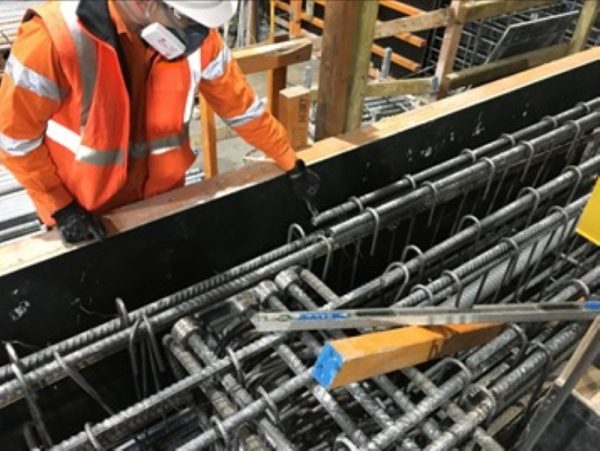
Technical Delivery Team
You may also decide that delivery is not for you, and you would like to pursue a more technical role within the delivery environment. Most major project teams will have a technical team. Technical teams work ahead of the delivery team, reviewing technical challenges and implementing solutions to allow construction to proceed without delay.
They also step in when there is a major technical or non-conformance issue. A role in the technical team may be better suited to an engineer who takes a more in-depth view on finding a solution and doesn’t enjoy the fast-paced setting of site-based decision making! The technical route can offer fantastic opportunities for a civil engineering career in Australia.
The key is to gain firsthand experience in various disciplines early in your career. This will allow you to decide what you want to focus on later. You can advance to a project or technical manager role with confidence, having acquired experience in several disciplines. As a manager, you need sufficient experience to understand and coordinate with other teams within the project. You certainly do not need to be an expert in everything!
Engineering Career Progression
A major benefit of working in civil engineering is the career progression that is attainable for anyone who has an interest and is willing to put in the work. Typically, an engineer can work their way from graduate to Senior Project Engineer in as little as 7 years and earn a salary of up to $220,000.
The progression isn’t the same for everyone, but the table below demonstrates what is very much attainable.
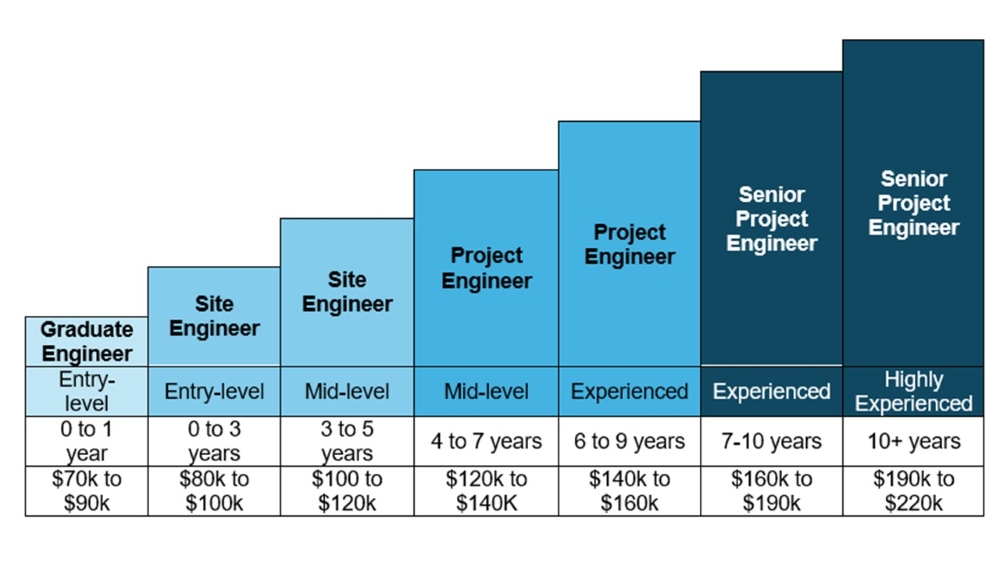
So, how does one improve their chances of decent progression in a civil engineering career in Australia? There are many factors that we will touch on here.
Tips to Improve your Career Progression
Like most careers, one of the most important aspects is showing interest and working hard. This will demonstrate your commitment to your manager and the rest of the site team (supervisors, senior engineers, managers, workers) and that they can rely on you to close out issues. This is especially important in a project delivery role.
The next step is to gain as much experience as possible and ask questions. Get out on-site and speak with the supervisors and contractors delivering the work. They will have teams of workers with years of experience carrying out specialized tasks that you can watch and learn from. These are the people from whom you will learn methodologies and technical aspects of civil engineering. Most are not gatekeepers and are happy to share their knowledge with someone willing to learn.
Show an appetite for more responsibility and remind your manager of this. Ask to take on more work, particularly tasks that are a step above your current role. An example of this would be a site engineer producing a basic lift plan. Then, request a project or senior project engineer to review it before being used on site. This demonstrates an independent way of working and an appetite to progress.
Lastly, be organised. Site-based civil engineers are more like junior project managers. Their role is to understand the program and ensure that materials, methodologies, and controls are in place at the right time to keep the project moving. The main difference as you progress from site to senior project engineer is the extended time frame for future planning and the increased level of commercial delivery risk management.
Related Information
If you would like to delve deeper into the specific role of site, project, or senior project engineers, please click on the links below to our mini-series on these roles.
- Site engineer role
- Project engineer role
- Senior Project Engineer role

